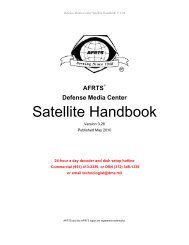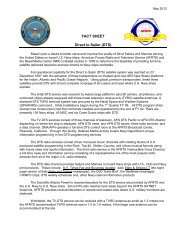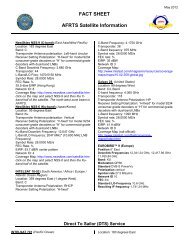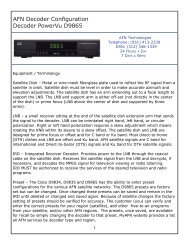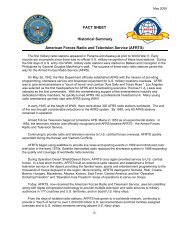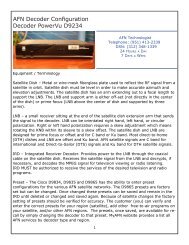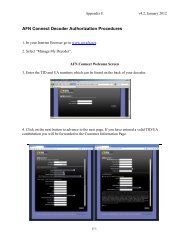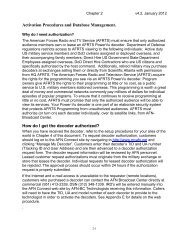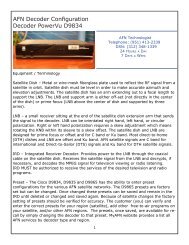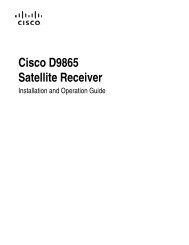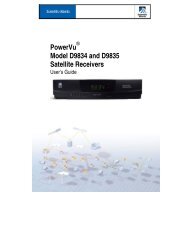Digital Satellite Downlink Reception - American Forces Radio and ...
Digital Satellite Downlink Reception - American Forces Radio and ...
Digital Satellite Downlink Reception - American Forces Radio and ...
You also want an ePaper? Increase the reach of your titles
YUMPU automatically turns print PDFs into web optimized ePapers that Google loves.
Defense Media Center <strong>Satellite</strong> H<strong>and</strong>book V.3.26<br />
Reflective surfaces come in several different shapes <strong>and</strong> sizes but are most<br />
common in the parabolic or offset shape. Offset shaped antennas are nothing<br />
more than a small section of the original parabolic antenna see figure 4-2. The<br />
larger the reflective service the better defined the focal point becomes <strong>and</strong><br />
therefore more gain can be expected. The reflector sometimes mistakenly called<br />
the antenna is the first step in a well-engineered system that will continue to<br />
provide service under harsh<br />
environments. If the size of<br />
your dish is too small for the<br />
signal you intend to capture,<br />
nothing is going to compensate<br />
for that. Working with an<br />
analog signal you could get by<br />
with a smaller dish but suffer<br />
with a noisy picture. A digital<br />
signal on the other h<strong>and</strong> is<br />
perfect or nothing situation <strong>and</strong><br />
with a marginal or less<br />
reflective surface you can<br />
expect nothing.<br />
Many of the small aperture Kub<strong>and</strong><br />
dishes sold these days<br />
use an offset antenna, see<br />
figure 4-2, a feedhorn design<br />
which places the focal point<br />
below the front <strong>and</strong> center of<br />
the dish. This type of antenna,<br />
Figure 4-2 An offset satellite antenna<br />
as defined earlier is actually a<br />
small oval subsection from a<br />
much larger parabolic antenna design, is oval in shape with a minor axis (left to<br />
right) that is narrower than its major axis (top to bottom). Because of its unique<br />
geometry, the offset fed antenna requires a specially designed feedhorn, which<br />
matches the antenna geometry precisely. For this reason, the offset fed antenna<br />
<strong>and</strong> feedhorn are usually sold together as a single unit. This type of feed is called<br />
a Low Noise Feed or LNF.<br />
Amplifier “LNA/B/C/F”<br />
The concentrated signal from the reflective surface is channeled to a low noise<br />
amplifier that has a very low noise floor. The job for this section is to amplify the<br />
signal to a level that is above the receiver’s threshold. The Low Noise Amplifier<br />
(LNA) amplifies the signal at the output of the earth station’s antenna. The most<br />
commonly used LNAs use gallium arsenide field effect transistors (GaAsFETs).<br />
Typical noise temperatures of amplifiers produced today range from 15° K to 60°<br />
K (LNB\C\F).<br />
4-4



